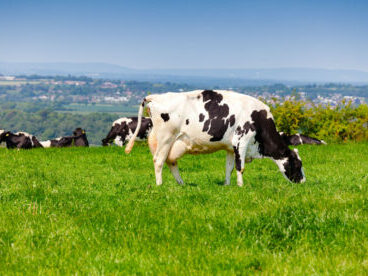Take a new look at milk records
Many farmers are considering quitting milk recording, questioning the value when all costs are coming under closer scrutiny. UFAC-UK Sales Manager Mike Chown, believes there are some very good reasons to keep recording, suggesting some new analyses can throw extra light on how the diet is performing.
While many farmers may be unsure whether they need some of the traditional reasons quoted for milk recording, a more in depth look at the data can really take the lid off how cows, and the diet, are performing. This will allow management to be fine- tuned to improve performance and efficiency. This is particularly true for cows in the crucial first 100 days of lactation.
Milk records need to be seen as a dynamic management tool and the following are just four examples of how the data can provide a real view of performance.
Look at milk lactose
Lactose is the driver of milk yield and should be at least 4.5%. Lactose levels below this are a clear indication that cows are short of glucogenic energy in the diet and that yield may be suffering as a result. If lactose levels are low the diet should be reviewed with particular attention paid to energy sources. It will probably pay to add Glycerene to the diet of fresh calvers.
Check the fat: protein ratio
This is a good indicator of whether cows are mobilising excess body fat. If the ratio is greater than 1.5:1 then it is probable too much body fat is being mobilised. This can be confirmed by looking at two other element on the records. A C18:1 level of over 22 points to excessive bodyweight loss, especially if MUFA levels are over 30.
As these indicate an energy shortfall in the diet, review energy levels and also dry matter intakes. The problem may be more with how much cows are eating than the diet itself.
Look at short chain fatty acid levels
This is a great indicator of rumen function with low levels pointing to an under-performing rumen. If levels are less than 9 then you should assume rumen conditions are sub-optimal and should assess the diet for effective fibre levels. Also check the balance of fats in the diet to ensure sufficient unsaturated fats are being fed.
What are milk protein levels?
A low milk protein content, and by low we would suggest a reading under 3%, can signal that cows are short of essential amino acids.
This commonly occurs when cows have lost so much condition in early lactation that they have mobilised muscle as well as fat, and are now using protein in the diet to rebuild this muscle. In these cases look at energy levels in the diet to try and reduce condition loss and negative energy balance.
It is also important to look at when problems are occurring, or more importantly stop occurring. If problems are in the first 40 days of lactation, the source of the problem is more likely to be in the transition diet. Later in lactation would suggest it is the fresh calved diet which needs reviewing.
With the focus on improving efficiency to reduce costs, delving into milk records could help highlight where diets can be fine-tuned to get fresh calved cows performing to their potential.


 Back to News
Back to News 



